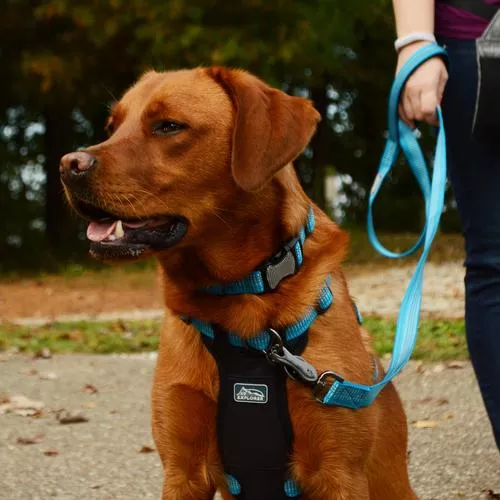Dog Harness Sizing & Types (with Dog Harness Size Chart)
Keeping your pooch safe during a walk outside can be as easy as choosing the right dog harness size. Get it wrong and it's too easy for your dog to slip out and dart into traffic.
But with so many types of dog harnesses how do you know which one to get or which dog harness size is right for your pup?
Here's everything you need to know about dog harness sizing and types, so you can feel confident the next time you go shopping for one.
(In this article, we're talking about dogs up to 100 pounds, as the vast majority of dogs fall into this weight range.)
Benefits of Dog Harnesses
First, let's address why you might want to choose a harness over a dog collar.
Generally speaking, dog harnesses provide owners more control over their dogs than collars. While they don't always stop a dog from pulling, they can make it easier to hold them back. (Harnesses with front leash connections stop pulling better than those with only back connections.)
When used on dogs that pull, harnesses spread the forces across a larger section of their body. Thereby, sparing them discomfort – or even damage – to their neck and windpipe. This is particularly true of very small dogs that are more easily hurt when they pull too hard against their leash.
Harnesses are also much less likely to come off than a collar (if sized properly, as we'll get into in a moment).
Finally, harnesses are good for older dogs who might need some help getting up after a rest. All you have to do is gently pull up to give your dog the extra boost he needs to get to his feet. Some harnesses also offer a handle to assist with this and provide added control, like the Coastal Reflective Control Handle Harness.
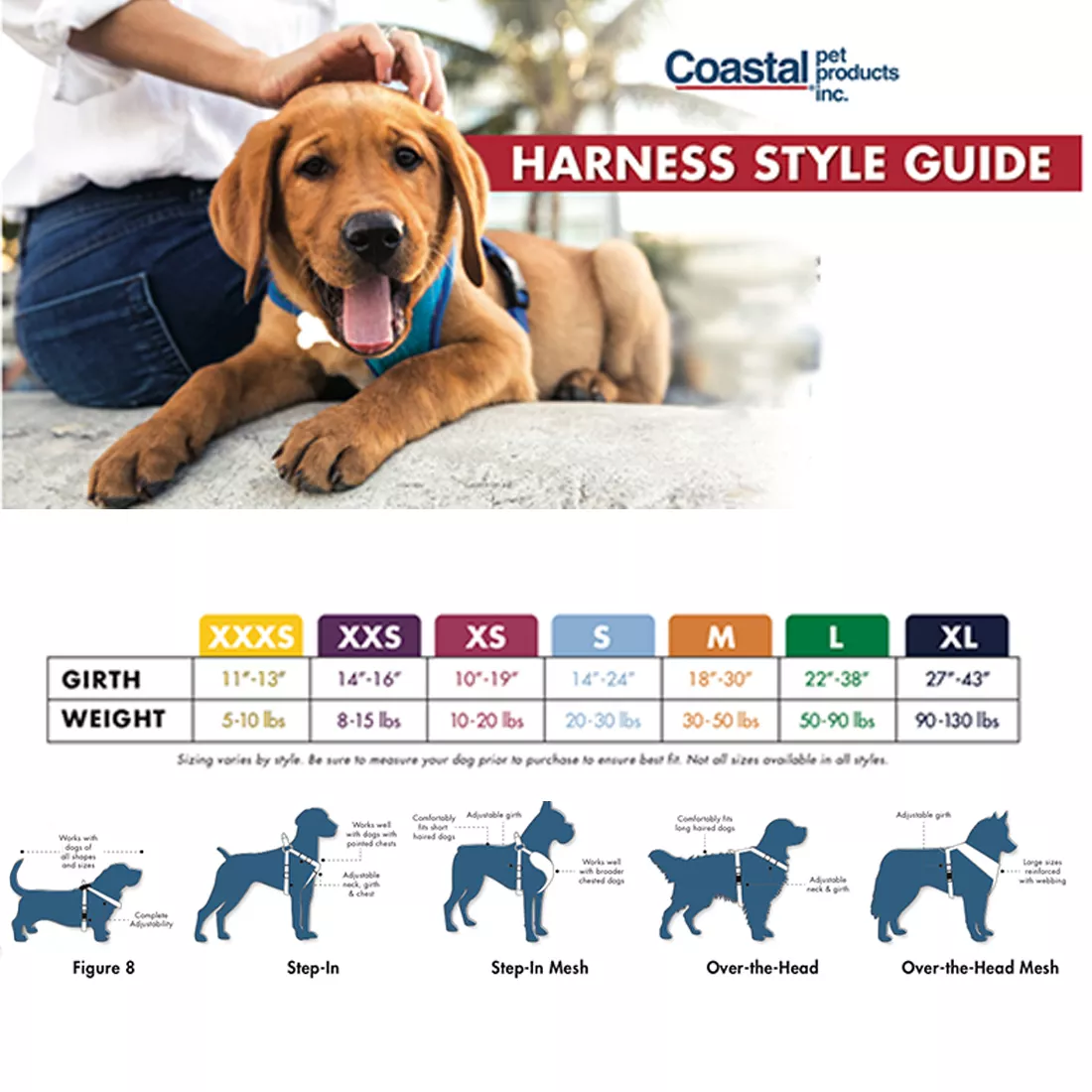
How to Measure a Dog for a Harness
There's only one rule when it comes to dog harness sizing: girth is most important.
But how do you measure your dog's girth?
"When sizing for a harness, you want to know the size of the chest, because that's what the harness is going around," says Melinda Rosato, manager of The Hungry Puppy in New Jersey.
Girth is the measurement of your dog's chest, the area of his body immediately behind his front legs.
To measure for girth, get your dog up on his feet and wrap a tape measure around the broadest part of his chest.
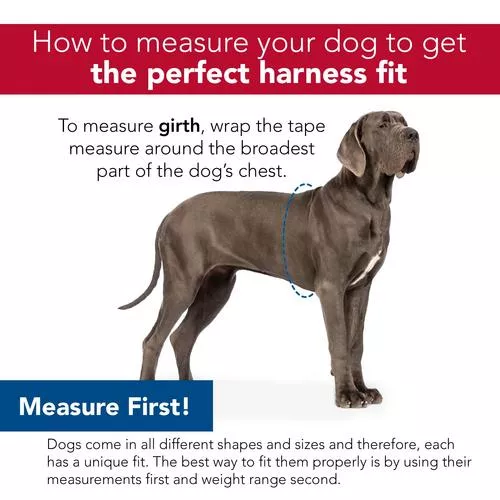
You'll use that number to determine the range of harness sizes appropriate for your pup.
But you'll also want to know his weight. For instance, a dog with a girth of 30 inches might wear a medium, large or extra-large sized Coastal Pet harness depending on his weight.
A 50-pound dog will take a medium, while a 75-pound dog will need a large, and a 100-pound dog will need an extra-large.
Just remember. Always start with the girth.
When properly sized, you should be able to fit two fingers between the harness and your dog's body. Additionally, it should not cause the skin around your dog's neck or shoulders to bunch up. Nor should you see any indentations in his fur when you remove the harness.
If you notice bunched skin or indentations: remeasure your dog, try a different style of harness, or switch back to a collar.

Puppies and Harnesses
Want to save yourself a little money? Wait until your dog is full-sized (or close to it) before sizing him for a harness.
People get harnesses for their dogs when they're nine- or 10-weeks-old, Rosato says.
"But it's not going to fit them in just a few months!"
Types of Dog Harnesses
There are as many types of dog harnesses as there are dogs.
Here are the main styles you'll see referenced:
Adjustable Strap
Adjustable strap harnesses (also called figure 8 harnesses) are the most minimalist. But they can still be stylish. Check out our collection of Li’l Pal’s Comfort Wrap Harnesses to see some seriously fashionable options.
They fit all kinds of dogs and while not the best choice for heavy pullers, they're perfect for easy-walk dogs.
This style of harness has the greatest range of adjustment, which means it can be a longer lasting product for a growing puppy or dog.
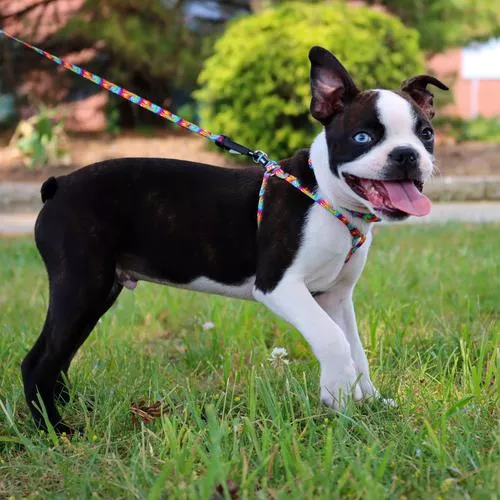
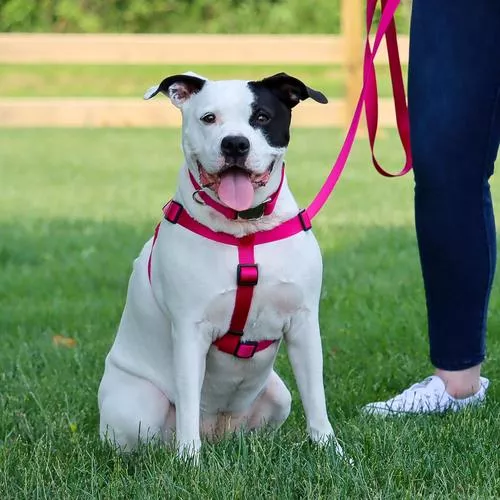
Step-In Strap
Slightly easier to put on, a step-in harness is pretty simple to figure out. It's got two loops, one for each leg, and a back strap that clicks together with a leash attachment. At Coastal Pet, our step-in strap harnesses are adjustable at the neck, girth, and chest.
Step-ins give you a bit more control over your dog but are also not great for strong pullers. Make sure it's adjusted correctly; too loose on a shorter-necked dog and it'll slip right over his head.
Coastal Pet's Comfort Wrap Adjustable is an example of a step-in strap dog harness.
Step-In Padded/Mesh/Vest
This harness style differs in that the middle section is bulkier than a strap. They are also less likely to cause chafing and can help make skittish dogs feel more secure. (On the other hand, some dogs don't like the feeling of confinement that the larger middle can create.)
Adjustable at the girth, these harnesses are a good choice for broader-chested dogs. Like Labs, German Shepherds, Rottweilers, Bulldogs, Boxers, Pugs, and Dachshunds.
Coastal Pet's K9 Explorer Reflective Adjustable Padded is a step-in padded harness, while the Comfort Soft Sport Wrap is a step-in mesh harness.
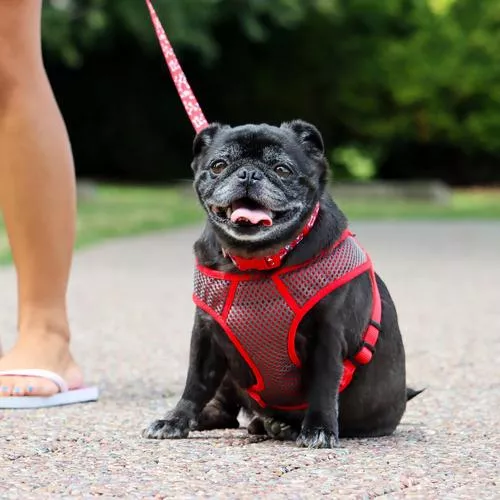
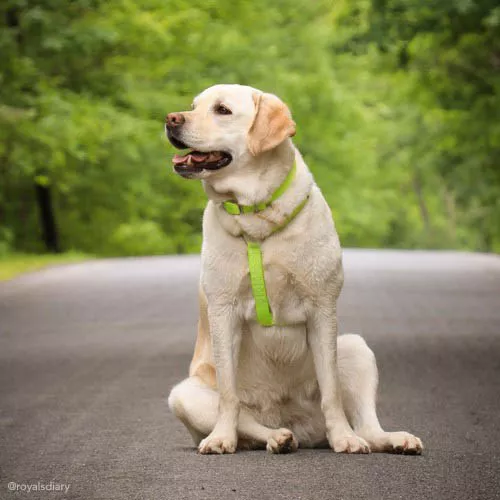
Over-the-Head Strap
Over-the-head strap harnesses are a type of figure 8 harness that goes over your dog's head, then behind their legs, before clipping together in the back. They're good for longer-haired dogs, as they're less likely to snag on their fur.
For an over-the-head strap harness at Coastal Pet, look no further than our Standard Adjustable Harness. It's adjustable at the neck and girth.
Over-the-Head Mesh/Vest
Like the over-the-head strap, the mesh/vest versions are a better choice for dogs that pull. The larger middle section is reinforced with webbing to help spread the pressure across a larger area when holding your dog back.
The K9 Explorer Brights Reflective Front-Connect is an over-the-head vest harness with both front and back leash connection options.
